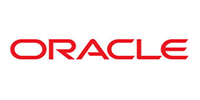Description
This course will allow you to master RMAN tools, advanced features such as using a catalog, stored scripts, duplication and transport of cross-platform databases.
Who is this training for ?
For whom ?This course is aimed at anyone who wants to use RMAN to perform backups of their Oracle databases.
Prerequisites
Training objectives
Training program
- Introduction and reminders
- Network configuration.
- Redo log files.
- Control files.
- Data files.
- Archivelog mode.
- The quick recovery area.
- Practical work Configuring the database in Archivelog mode.
- Start the database remotely.
- Introduction to RMAN
- Architecture.
- Client utility.
- Basics.
- The control file.
- The memory usage.
- The quick recovery area.
- Persistent configuration in the target database control file.
- Channel concept and use of channels.
- Practical work Configuration of the control file.
- Media managers
- Magnetic tapes.
- Media Manager.
- Media Management Library.
- Tape backup/restore.
- Oracle Secure Backup.
- User interface.
- Backup with RMAN
- Cold/hot backup.
- Image copies vs. backup sets.
- Backup compression.
- Full backup/ incremental.
- Processing read-only files.
- Corruption test.
- Using command groups.
- RUN command.
- SET command.
- Backup of tablespaces, files, archived redo log files, control file, SPFILE file.
- Practical work Using commands BACKUP and RUN.
- Restoration/recovery with RMAN
- RESTORE command.
- Restoring the SPFILE file and the control file.
- Restoring a specific/old backup.
- Restoration with renaming.
- The RECOVER command.
- Partial/incremental recovery.
- Practical work Restoration to a new location.
- Recovering a database following file loss.
- Maintenance de RMAN
- The catalog database.
- Creation of the catalog.
- Registration of target databases.
- Addition of catalog backups.
- Using stored scripts.
- Saving the catalog database.
- The LIST command.
- The REPORT command.
- Views.
- CROSSCHECK, CHANGE and DELETE commands.
- Practical work Creating the catalog.
- Using stored scripts and LIST commands and REPORT.
- Checking backups.
- Advanced Features
- Block corruption.
- TableSpace Point-In-Time Recovery (TSPITR).
- Cloning a database.
- Practical work Recovery of corrupted blocks.






